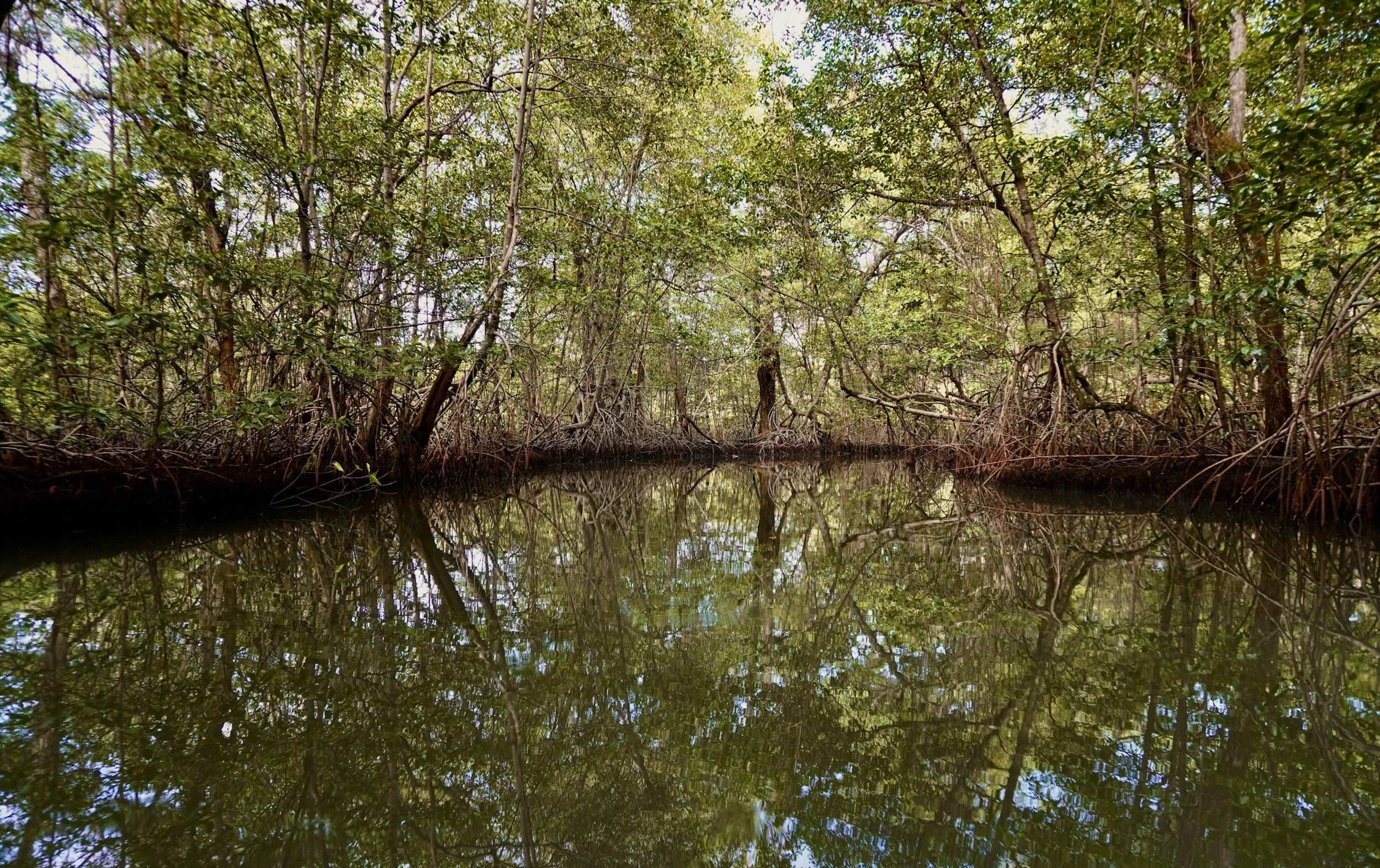
Mangroves
Status, Conservation, and Future Outlook of Mangroves in Florida
One of the most valuable and distinctive plant systems in Florida includes mangroves. Serving a significant function related to coastal defense, biodiversity, and storing carbon, the prime locations containing mangrove ecosystems are spread along the coastline in South Florida and the Florida Keys. Three species of mangroves predominate along Florida shores: red mangrove (Rhizophora mangle), black mangrove (Avicennia germinans) and white mangrove (Laguncularia racemosa). Despite their ecological importance, there are major threats to these ecosystems, such as loss of habitat due to coastal development and changes in climate.
Status of Mangroves in Florida
Florida is home to approximately 500,000 acres, most of which are found in southern Florida. The largest expanses of mangrove habitat in the United States can be found in Everglades National Park, the Ten Thousand Islands, and the Indian River Lagoon. Mangroves are considered protected resources under Florida law, and the destruction or alteration of these ecosystems is closely regulated.
While the overall mangrove coverage has remained quite stable in recent years due to conservation and legal protections, localized losses still do occur. One of the major threats is coastal development for residential, industrial, and tourism purposes. Besides, northern Florida mangrove ecosystems have been stressed because of periodic cold snaps, which limit their growth range.
Ecological Importance of Mangroves
It has been said that mangroves are "coastal guardians" because they are identified to provide a number of key ecosystem services:
1. Coastal Protection: Mangroves act as natural buffers against storm surges, hurricanes, and erosion. The dense root systems of these forests hold shorelines intact and weaken wave and current forces.
2. Biodiversity Hotspots: Mangrove forests provide habitat and nursery grounds for a wide array of species, including fish, crustaceans, mollusks, birds, and marine mammals. Many economically and ecologically important species, including snook, red drum, and shrimp, depend on mangroves during their juvenile stages.
3. Carbon Sequestration: Mangroves are highly effective at capturing and storing carbon, known as "blue carbon." Long-term carbon sequestration in sediment makes them highly important in mitigating a changing climate.
4. Water Quality: Mangroves filter pollutants and trap sediments from terrestrial runoff, thus cleansing the water in both estuaries and coastal zones.
Conservation Efforts
Recognizing the value of mangroves, Florida has put into place robust conservation legislation. Legislation like the Florida Mangrove Trimming and Preservation Act enacts control on mangrove management and prohibits mangrove cutting or removal arbitrarily. Restoration projects through agencies like the FWC and the Nature Conservancy include the replanting of mangroves in degraded areas and restoring tidal flows to support natural regeneration.
The Comprehensive Everglades Restoration Plan (CERP) also emphasizes the protection of mangroves by enhancing freshwater input into the coastal ecosystem to support the health of mangroves. Pollution, mainly nutrient runoff, is being addressed to preserve water quality for the survival of mangroves.
Threats and Future Outlook
Mangroves are under increasing threat from climate change, sea level rise, and coastal development. Rising sea levels can inundate mangrove forests, while changes in salinity and temperature impact their growth and reproduction. Extreme weather events, like hurricanes, can cause great damage to mangrove forests, although these ecosystems are generally resilient and capable of natural recovery.
Urban expansion and shoreline hardening continue to encroach on mangrove habitats, particularly in areas with high real estate demand. A balance between economic development and the preservation of mangroves remains one of the major challenges facing policymakers and conservationists.
Despite these challenges, the future for Florida's mangroves relies on continued conservation, habitat restoration, and public awareness. Improvement in legal protection, sustainable practices in coastal developments, and increase in the scale of restoration projects are paramount to building resilience in these ecosystems.
Public engagement in the conservation of mangroves is equally important. Educational activities and citizen science programs inspire communities to plant and monitor the growth of mangroves. Furthermore, the recent awareness of the role that mangroves play in mitigating climate change has driven global actions toward protecting and restoring these vital ecosystems.
Conclusion
Mangroves are essential to Florida's ecological health and coastal resilience, providing numerous benefits ranging from storm protection to biodiversity support. While conservation measures have stabilized their status in recent years, mangroves remain vulnerable to changing climate, sea level rise, and human development. Through continued legal protections, restoration initiatives, and increased public involvement, Florida can safeguard its mangrove ecosystems for future generations, ensuring their invaluable contributions to both nature and society persist.

